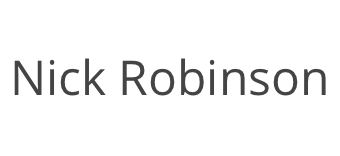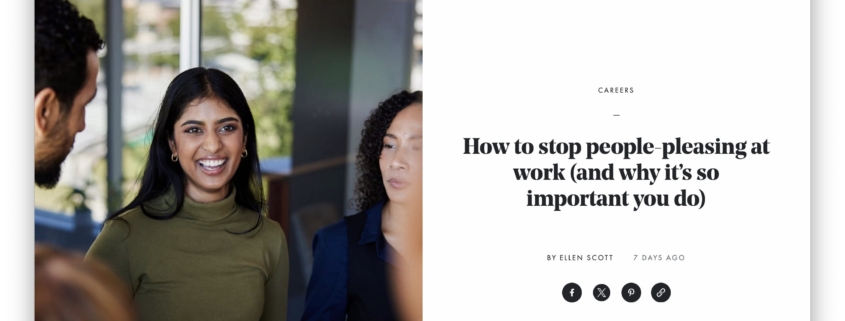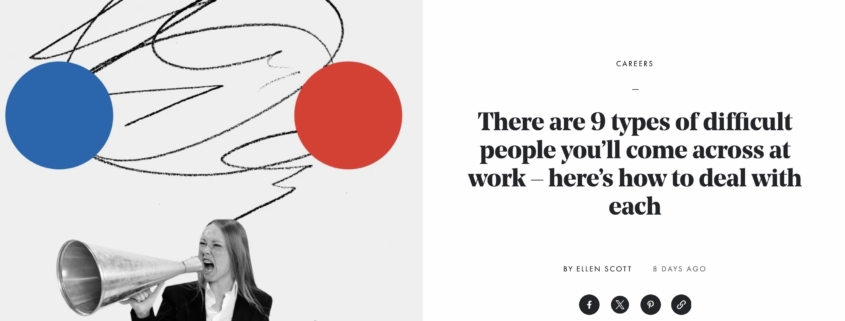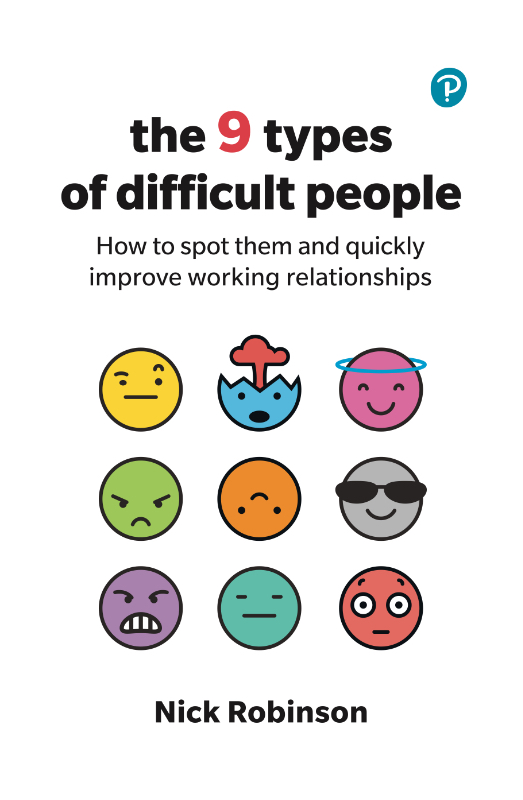Posts
Business Book of the Month Webinar
I was recently interviewed by my publishers Pearson for their Business Book of the Month webinar on LinkedIn.
We talked about my book, The 9 Types of Difficult People at work and had a great Q& A session. I presented some of the most important themes from the book, including:
- How to get your headspace right place for dealing with a difficult person at work
- What it costs the business if you do nothing
- Why people become difficult at work
- Tools and strategies for dealing with them with constructively, effectively, and compassionately.
Click the play button to watch the video of our webinar.
How to Stop Being a People-Pleaser at Work – My Book in Stylist Magazine
More great coverage of The 9 Types of Difficult People in the press, including this super article in Stylist Magazine on How to Stop Being a People-Pleaser at Work
Here’s some of the highlights from the article, which I’ve linked in full below.
🔍 Acknowledging the Issue
Realising that being a people-pleaser can hinder your professional growth in quite a few different negative ways.
📝 Preparing for Difficult Conversations
Techniques for handling those necessary but challenging conversations effectively.
🚫 The Art of Saying ‘No’
Strategies to assert your needs and priorities without adding to the conflict, so enabling healthier workplace dynamics.
💪 Reclaiming Your Power
Emphasising the importance of authentic communication and setting boundaries for personal and professional development.
Click here for the full article in Stylist Magazine.
Why People Become Difficult at Work
Ever experienced someone being really difficult to get on with at work, and wondered WHY?
There are four key reasons:
- Unconscious Reactions to Stress
They’re reacting to what’s going in inside the organisation and its operating environment (and it’s likely there are things beyond their control that the organisation itself needs to fix) - Positive Intentions
They’re trying to achieve something but are having the wrong impact - Self-Doubts and Self-Sabotage
Their own thought-processes are piling on more pressure and more rigidity in how they behave - Inflexible Approaches
They’re not switching the focus of their intentions to suit the people and circumstances around them.
When things aren’t going smoothly, if we can understand what’s behind the way someone behaves at work, it makes it much easier to help them and others to get along well together.
There’s still a lot to do, and it’s important not to jump to blaming or shaming. But understanding Why can be a crucial first step.
To discover more practical tips and strategies for dealing with a difficult person and quickly improving workplace relationships, please check-out my book The 9 Types of Difficult People or explore more of the articles and resources on this website.
My Book in Stylist Magazine: 9 types of difficult people you’ll come across at work
Very pleased to see that we’re getting some great coverage of The 9 Types of Difficult People!
The latest to appear is an article in Stylist Magazine, which bills itself as:
“… the UK’s leading media brand for professional women; talking to 5 million UK women a month and making up 40% of the women’s lifestyle sector.”
I like this article because it gives a good overview of each of the 9 types of difficult people at work. And it features really practical hints and tips to turn things around and create great working relationships for everybody.
Here’s the link to the full article in the magazine:
➽ There are 9 types of difficult people you’ll come across at work – here’s how to deal with each
Maximising the Impact: How to Use ‘The Nine Types of Difficult People’ Effectively 📘
Improving workplace relationships can be tricky, especially when dealing with challenging personalities!
My book, ‘The Nine Types of Difficult People‘, is designed to be your guide through this maze. But how can you get the most out of it?
Here are some tips:
🔍 Understand the Layout
- Chapter Two is Your Starting Point: It sets the foundation for the rest of the book. Start here to quickly understand my overall approach and how to apply it.
- The Matrix of Difficult People: Took a look at this tool in the early chapters. It’s crucial for identifying and understanding the different types you might encounter.
🤔 Reflect on Your Situation
- Identify Your Difficult Person: Use the matrix and descriptions to help pinpoint the type of difficult person you’re dealing with.
- Context Matters: Consider your role in relation to the difficult person – are you their leader, colleague, or team member?
📝 Apply the Strategies
- Tailored Approaches: Improving relationships works best with the right strategy. Find the chapter that corresponds to your identified type and explore that.
- Practical Tips and Tactics: Implement the suggested strategies in your day-to-day interactions.
🔄 Iterate and Adapt
- Not a One-Time Read: Your first pass through the book is great beginning and often leads to some useful quick-wins. Return to the relevant sections as your situation evolves.
- Stay Flexible: Be prepared to adjust your approach as you learn more about the individual and the dynamics involved.
🔗 Connect the Dots
- Beyond the Individual: Use the insights from the book to enhance the overall team dynamics and culture in your workplace.
- Share Your Learnings: Discuss concepts from the book with colleagues to help build a more understanding, collaborative and effective working environment.
Dealing with difficult people is both a mindset and a skillset that can be easily developed. My book is here to guide you, and the real change happens through your application of these strategies in the real world.
Let’s make work a place where everyone can be at their best!
Were problems at OpenAI caused by Sam Altman being a ‘Difficult Revolutionary”?
In my new book, ‘The 9 Types of Difficult People’, I write about what can go wrong when someone who readily embraces change fails to bring all of their stakeholders along on the journey.
A Revolutionary is someone who:
★ Is usually a self-starting, enthusiastic person
★ Is great at discovering out new ideas and different approaches
★ Readily embraces change; and
★ Will push for fast and wide-ranging transformation regardless of its wider implications.
In the right circumstances, these are terrific qualities. But things can go wrong at work if this kind of person:
★ Exceeds the boundaries of what’s expected of them
★ Goes faster than their allies and supporters can deal with
★ Overlooks the slow and iterative political consensus building that other people often need before being ready to support and adopt new ideas.
At the time this article is published, there has been lots of coverage in the press about OpenAI founder Sam Altman’s firing by its board.
Altman’s career so far, his transition from selling Loop, joining Y Combinator and then to OpenAI, and the pace of change there, certainly share some of the characteristics of a Difficult Revolutionary that I’m looking out for.
According to The Guardian Sam Altman was fired because he “was not consistently candid in his communications with the board”. When staff warned that Altman’s departure could trigger OpenAI’s collapse, The Guardian reports, the board said this would “be consistent with the mission”.
Without knowing more about what’s happening behind those boardroom doors, we can’t say for sure if that failure to bring stakeholders along is exactly what’s happened here – but it looks like it might be!
☞ So, if you’re on the Board of an organisation with a Revolutionary at its helm, or if you’re a Revolutionary yourself, what should you do to create great working relationships?
🙃 More than anything, leaders of a Revolutionary need to be working hard to make sure that everyone is on the same page. Checking that their agendas are aligned, discussing what is and isn’t acceptable to aim for, and making sure the wrong bridges don’t get burned. That leadership is vital in keeping a Revolutionary’s efforts directed at the right common ground.
🙃 Revolutionaries themselves are often surprised that others don’t share all of their zeal. So my favourite tip for them is to learn the influencing, alliance- and consensus-building skills that will attract all their stakeholders to the cause.
Viva la revolución!
Here’s the link to The Guardian article referenced above:
https://www.theguardian.com/commentisfree/2023/nov/26/the-guardian-view-on-openais-board-shake-up-changes-deliver-more-for-shareholders-than-for-humanity
Beyond the Monster Myth: Unraveling the Mystery of Difficult Leaders
The more people I spoke to about this leader, the more worried I got:
🔴 “Extremely difficult, scary and obstructive!”
🔴 “The department is haemorrhaging staff and managers.”
🔴 “Every time we try to change something, he blocks it!”
🔴 “You are literally our last attempt before we look at dismissal.”
By the time our first coaching session came around I was expecting to meet something of a monster.
But what I found was very different.
It seemed to me that here was a baffled and bewildered person. Someone in a demanding role, in challenging and shifting circumstances, trying their best to get good outcomes for their department’s clients. In the only way that they knew how.
As well as a slight concern that I was being played by this person, I left with lots of questions. How could there possibly be such a massive gap between what I thought – and the hugely negative experiences that other people were having? In the end, we coached together for six months and created some very positive change.
I got so curious about what was going on to create this kind of situation to start with that I ended up writing my first full-length book about it – The Nine Types of Difficult People.
If you’ve ever wondered how it could easier to help a difficult person themselves, or how the people around them can deal with what’s going on as quickly and effectively as possible, please check out the links below to discover more about the book and look around this website for other resources.
Grab yourself a copy at any good bookshop or online using these links:
Crumbs! I’ve only gone and had a book published …
Even though it’s been a massive part of my work for years now, deciding to write a book about how to deal with *difficult people* wasn’t easy.
My take is that almost everybody we find difficult is someone trying to do their best, in a situation they find very challenging, in what is often the only way they know how. So if you want to make a difference in that situation it has to involve a lot of soft compassion 𝒂𝒏𝒅 hard constructive challenge.
And that’s why I was so grateful to win the support of my agent Kizzy Thomson, editor Eloise Cook and the rest of the fantastic team at Pearson, who all really got what the book was about and the approach it needed to take.
Thank you to supporters, pre-publication reviewers and everybody who helped me over the last three years of putting this together. Individual thanks and copies are heading out as soon as.
The presses are rolling and my hope now is that a copy of my book drops into the hands of someone who needs it just at the right time.
Grab yourself a copy at any good bookshop or online using these links:
Bookshops:
Coaching to help leaders and teams turn challenging dynamics into great working relationships





 Nick Robinson
Nick Robinson
